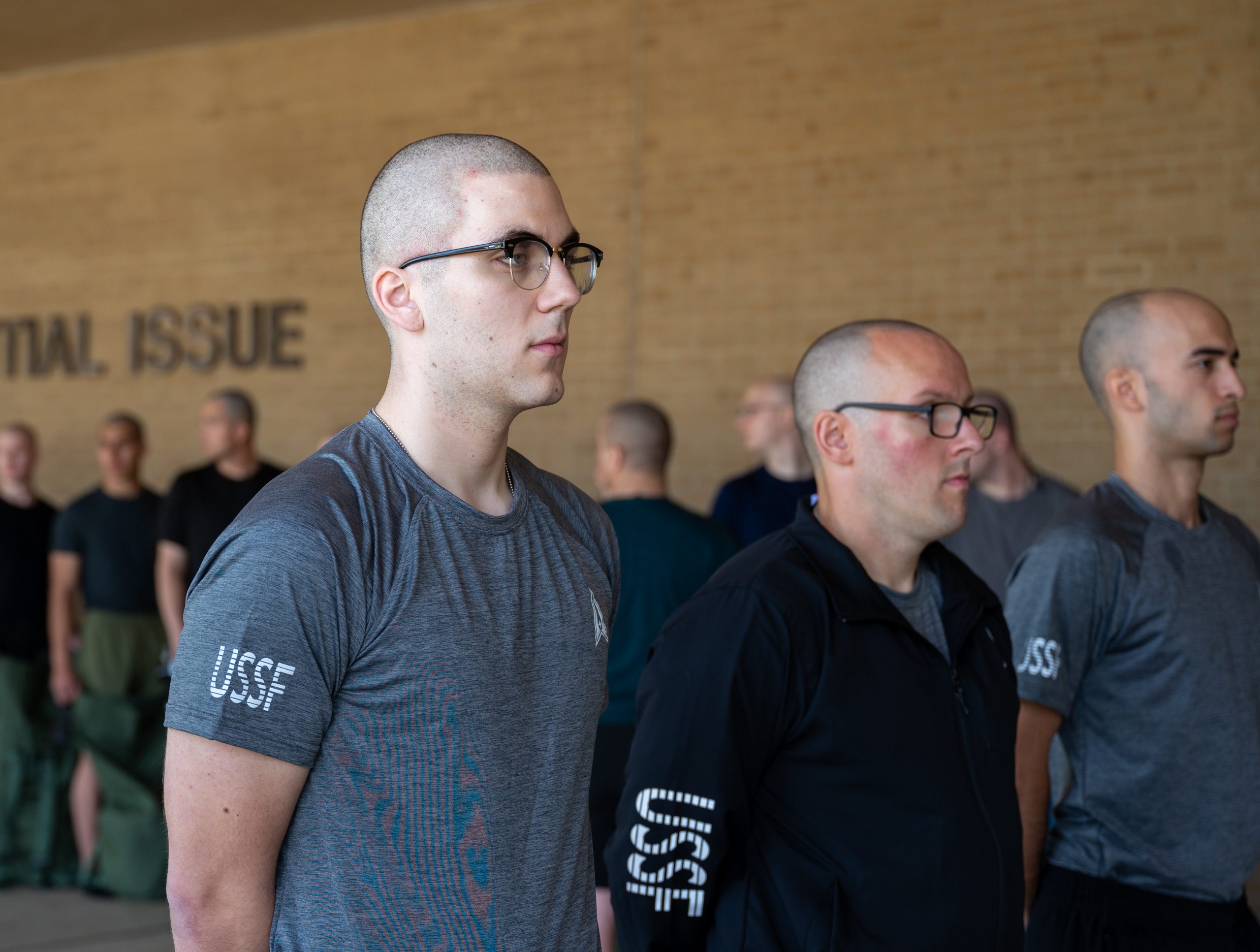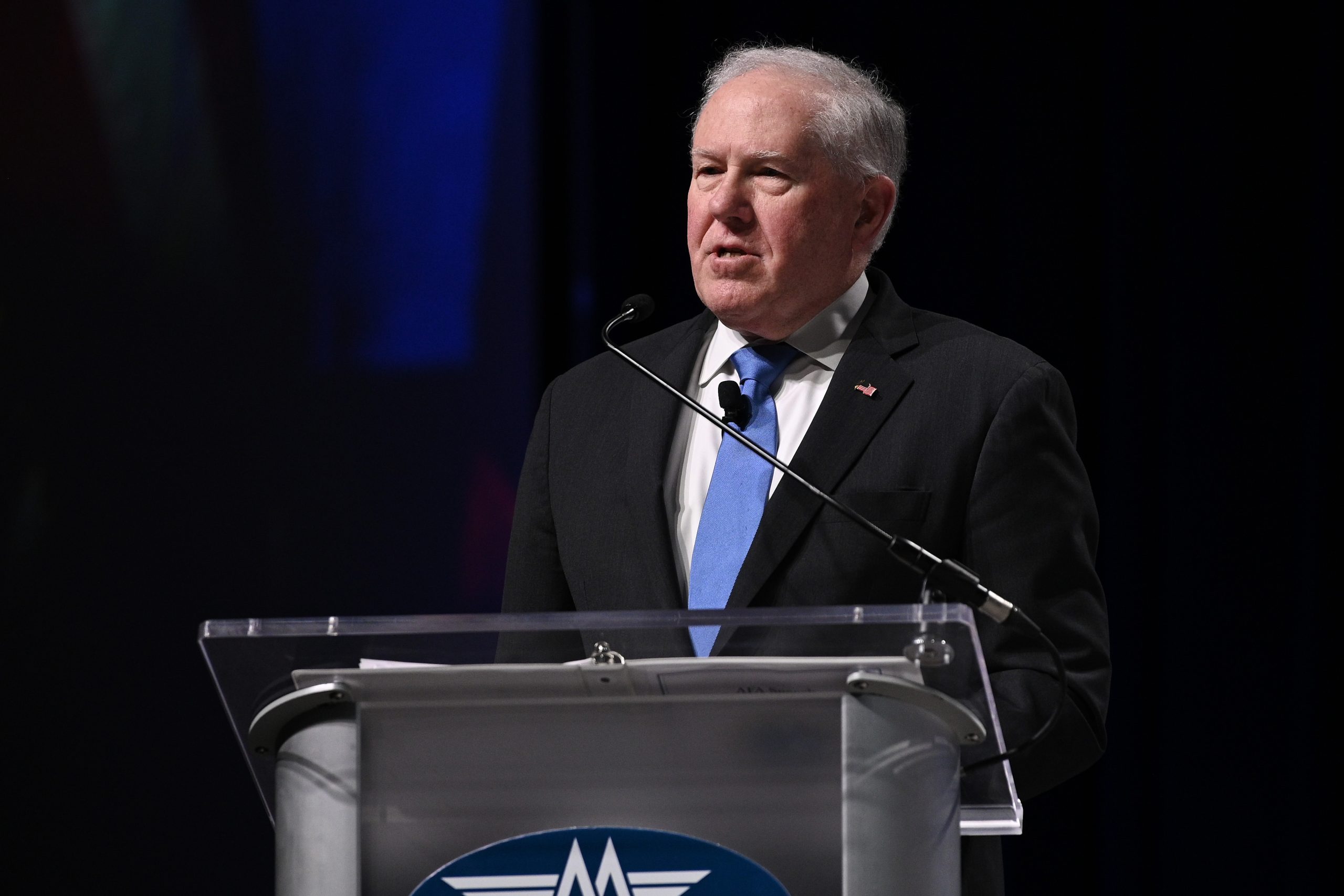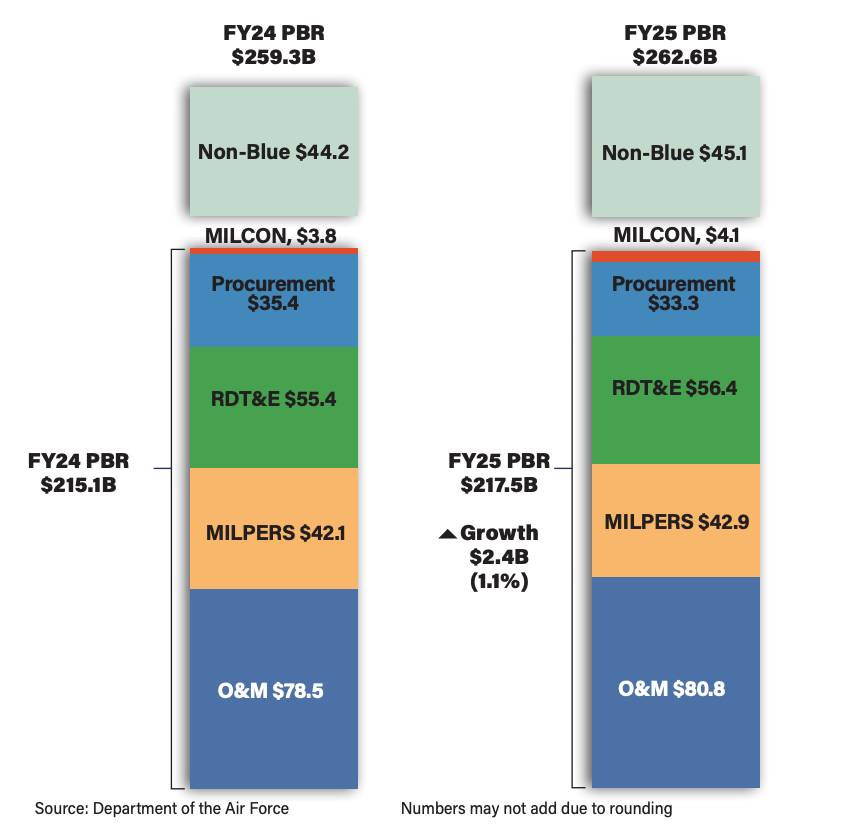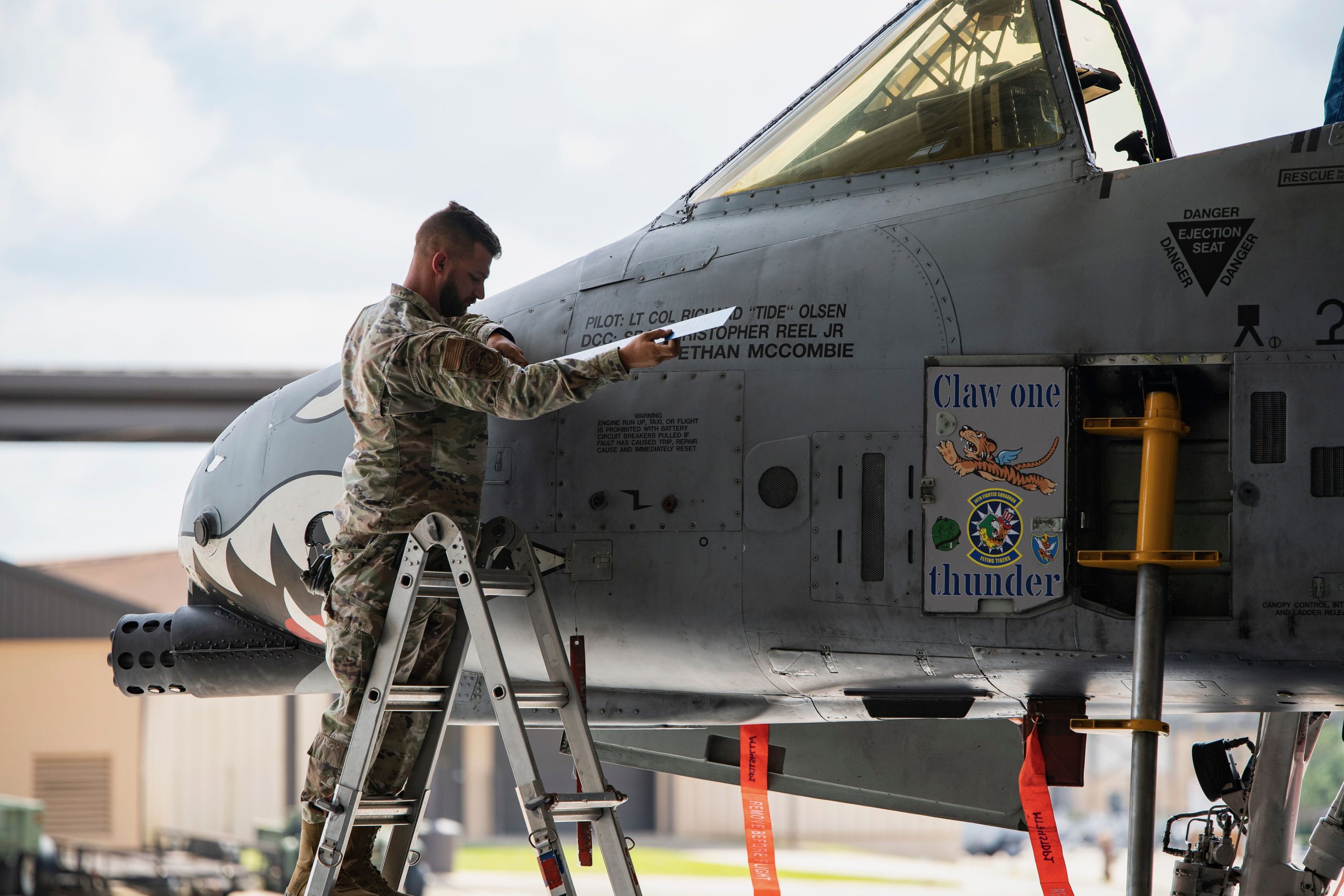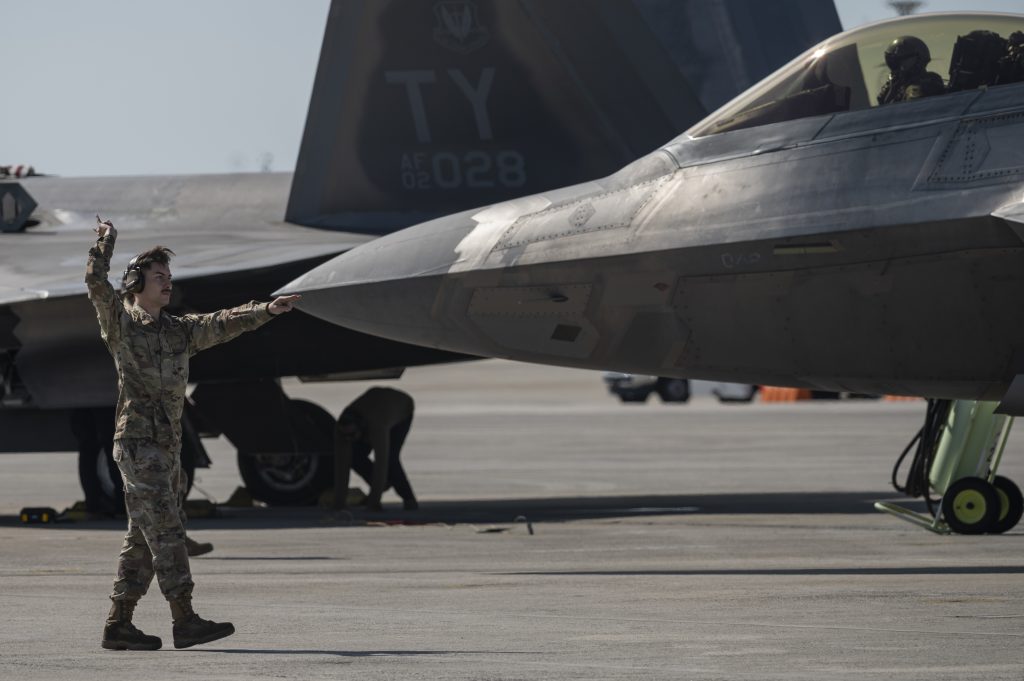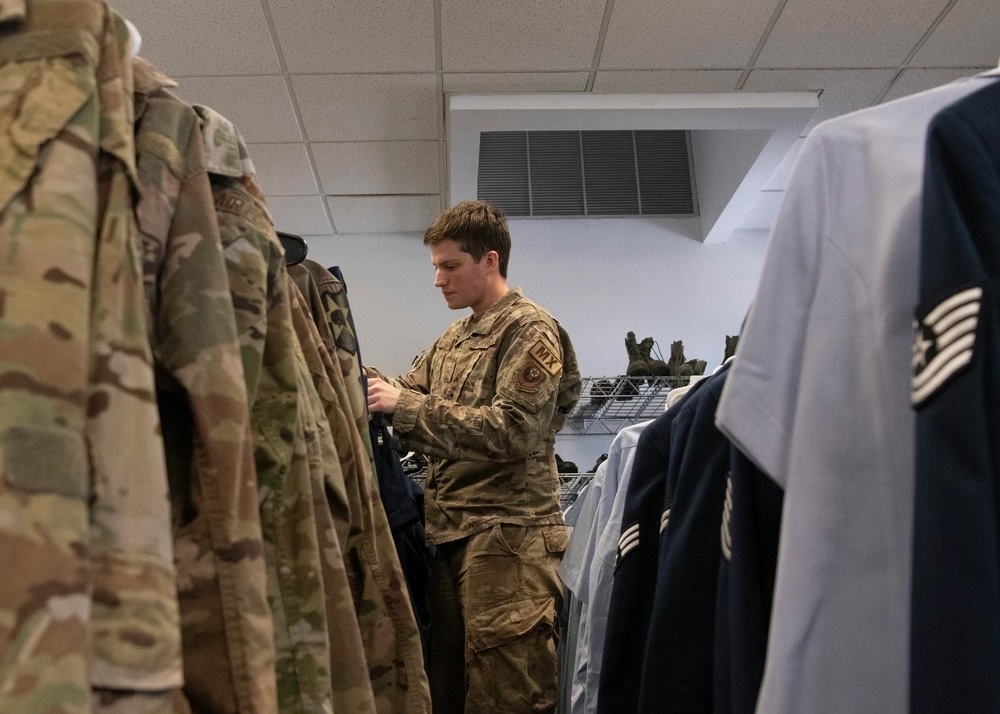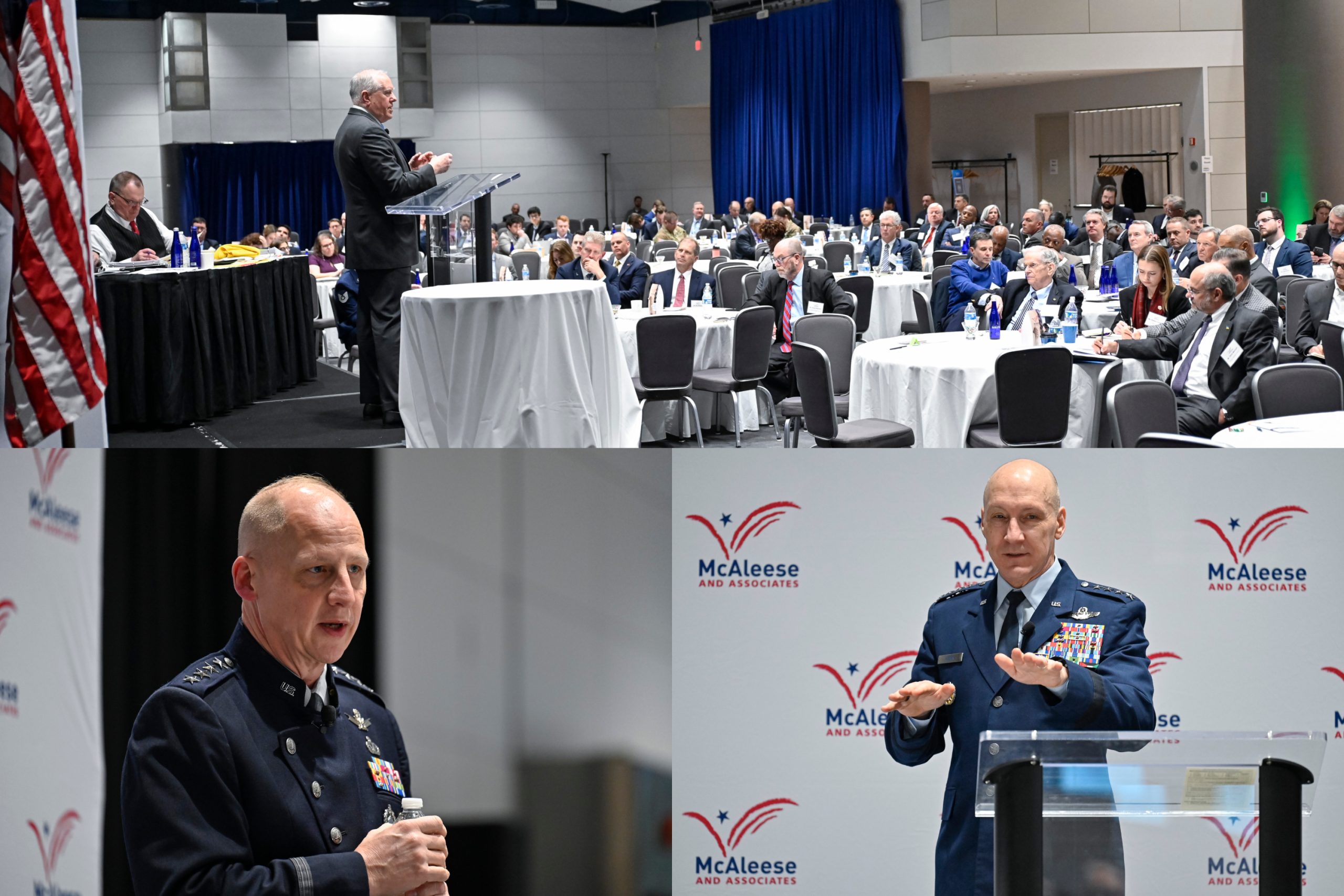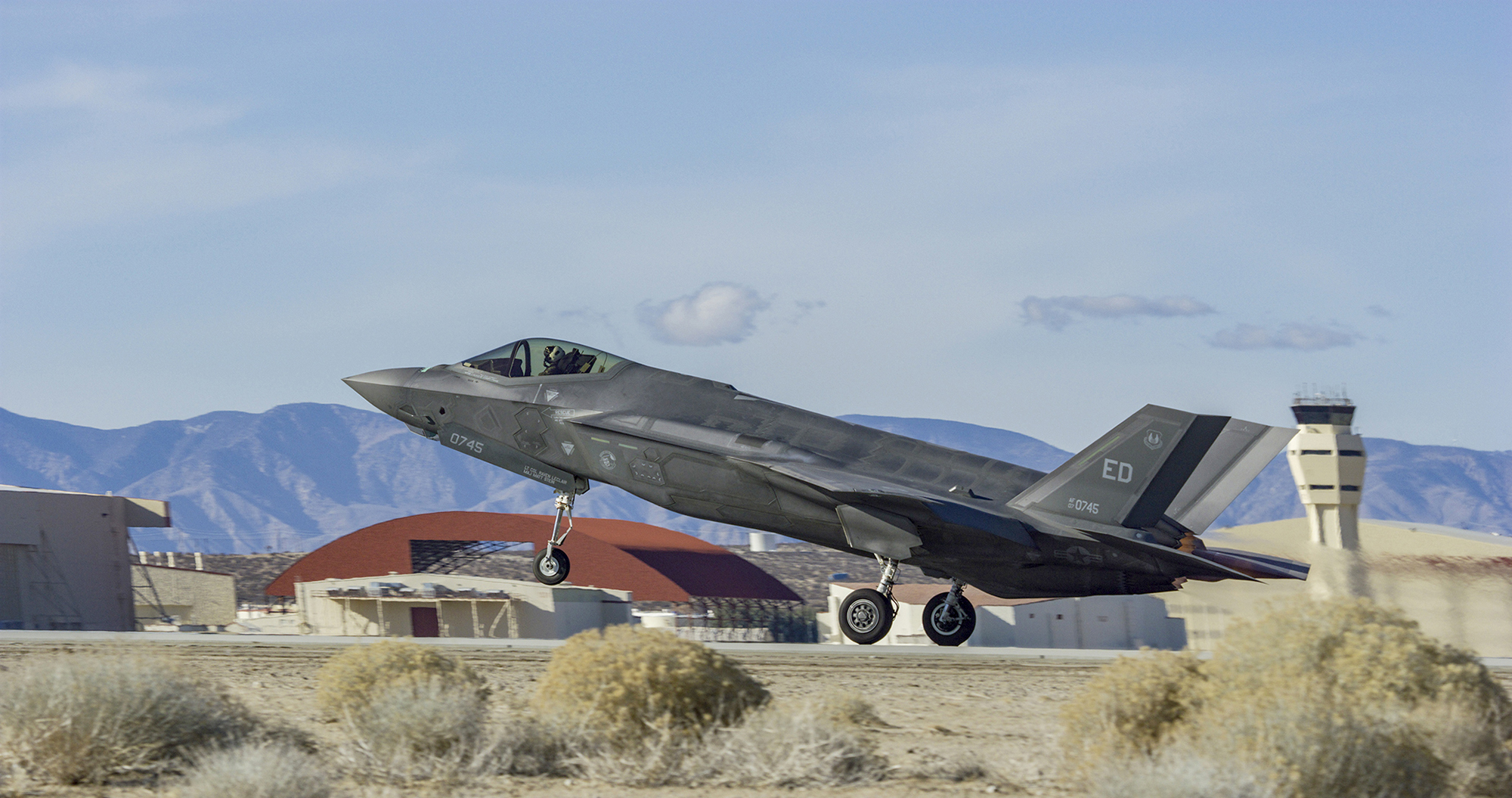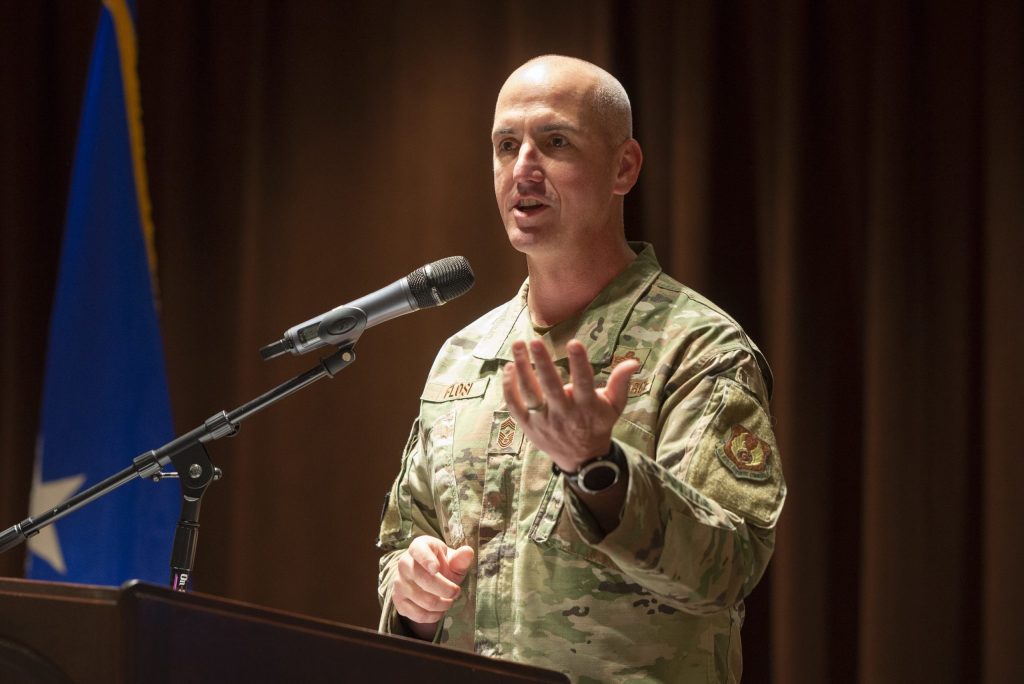The Space Force officially started rolling out its new physical training uniform on March 8, giving Guardians their first ever finalized service-specific uniform.
Airmen, meanwhile, will have to wait one more month before the Air Force starts distributing its new PT gear.
The Space Force uniform—black shorts, a dark gray T-shirt, black sweatpants, and a black windbreaker, with a patterned “USSF” on the sleeves of the shirt and jacket, “Space Force” on the back of the shirt, and the Space Force’s Delta logo on the left side of each item—was first distributed to new Guardians at Basic Military Training at Joint Base San Antonio-Lackland, Texas.
Over the next several months, the service will deliver the gear to Army & Air Force Exchange Service (AAFES) locations with Space Force personnel, including Peterson, Schriever, Buckley, Vandenberg, and Patrick Space Force Bases, Los Angeles Air Force Base, and the Pentagon, according to a service release.
Officials are asking Guardians to only buy one uniform set to start, as supplies will be limited.
“The PT uniform cost will be calculated into the Guardian uniform replacement allowance beginning April 2024,” the release noted.
The Space Force first unveiled its PT uniform for wear-testing in September 2021 at AFA’s Air, Space & Cyber Conference—2nd Lt. Mahala Norris, an NCAA track star at the Air Force Academy, sported the gear in a promotional video. In April 2023, the service said it would roll out the uniform in early 2024.
It’s been a slightly longer process for the Air Force’s new PT uniform, the design of which was first released in March 2021, with the plan to release it to Airmen in October 2022. Supply chain issues delayed that process multiple times, and a spokesperson told Air & Space Forces Magazine that the service now expects to roll out the gear in April, also to BMT trainees.
The latest delay of about a month was “due to a previous fabric shortage and pending resolution of an ongoing color match concern for the running and all-purpose short,” the spokesperson said.
There is no timeline for AAFES locations to start stocking the uniform, the spokesperson added.
The Air Force PT uniform consists of a jacket, pants, and two types of shorts—all in dark blue with a gray stripe and the Air Force logo—as well as a gray T-shirt with the Air Force logo on the upper left chest and a patterned “Air Force” across the back. The gear is significantly less bulky than the current uniform, which was first introduced in the early 2000s and is notorious for its “noisy” fabric.

Both the Air Force and Space Force PT uniforms are being crafted with soft, quick drying, antimicrobial “performance” fabrics to wick moisture and control odors. Both services are also making men’s and women’s sizes, instead of unisex, for better fit.
The PT uniform marks another step as the Space Force establishes its identity as an independent military branch. Another major step is its service dress, where USSF is testing a distinctive look with a dark blue coat—almost black—that has an upturned collar and closes with a diagonal row of six buttons, as well as dark gray pants and a lighter gray shirt. In September, more than 100 Guardians across the globe started wearing the prototype at least three times per week as part of “wear testing,” the final stage before the uniform is produced and rolled out to Guardians everywhere in 2025.
For day-to-day wear, the Space Force still uses the same Operational Camouflage Pattern uniform worn by the Army and the Air Force, but with service-specific blue nametape.
